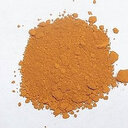Effect of silicate and phosphate solubilizing rhizobacterium Enterobacter ludwigii GAK2 on Oryza sativa L. under cadmium stress.
Parole chiave
Astratto
Silicon and phosphorus are elements that are beneficial for plant growth. Despite the abundant availability of silicate and phosphate in the earth's crust, crop nutritional requirements for silicon and phosphorus are normally met through the application of fertilizer. However, fertilizers are one of the major causes of heavy metal pollution. In our study, we aimed to assess silicate and phosphate solubilization by the bacteria Enterobacter ludwigii GAK2, in the presence and absence of phosphate [Ca3(PO4)2] or silicate (Mg2O8Si3), to counteract cadmium stress in rice (Oryza sativa L). Our results showed that the GAK2 treated rice plants, grown in soil amended with phosphate [Ca3(PO4)2] or silicate (Mg2O8Si3), had significantly reduced cadmium content, and enhanced plant growth promoting characteristics including fresh shoot and root weight, plant height, and chlorophyll content. These plants showed significant downregulation of the cadmium transporter gene, OsHMA2, and upregulation of the silicon carrier gene, OsLsi1. Moreover, jasmonic acid levels were significantly reduced in the GAK2 inoculated plants, and this was further supported by the downregulation of the jasmonic acid related gene, OsJAZ1. These results indicate that Enterobacter ludwigii GAK2 can be used as a silicon and phosphorus bio-fertilizer, which solubilizes insoluble silicate and phosphate, and mitigates heavy metal toxicity in crops.


